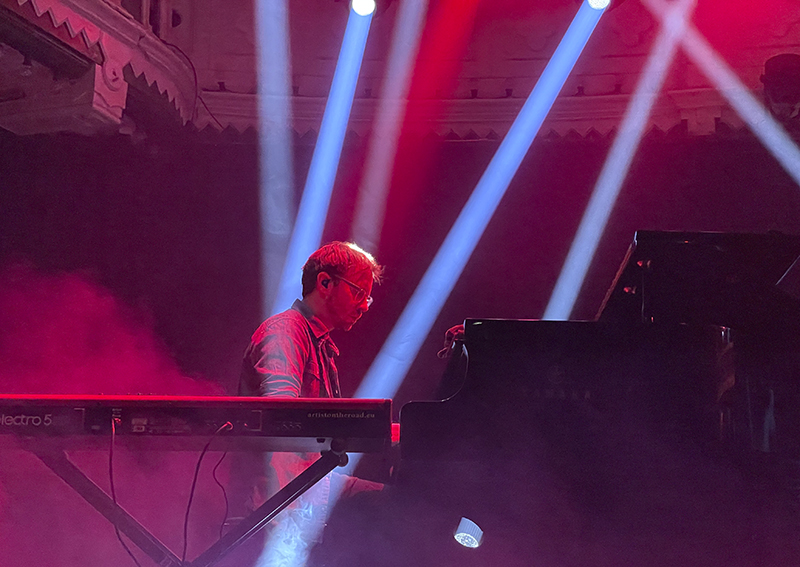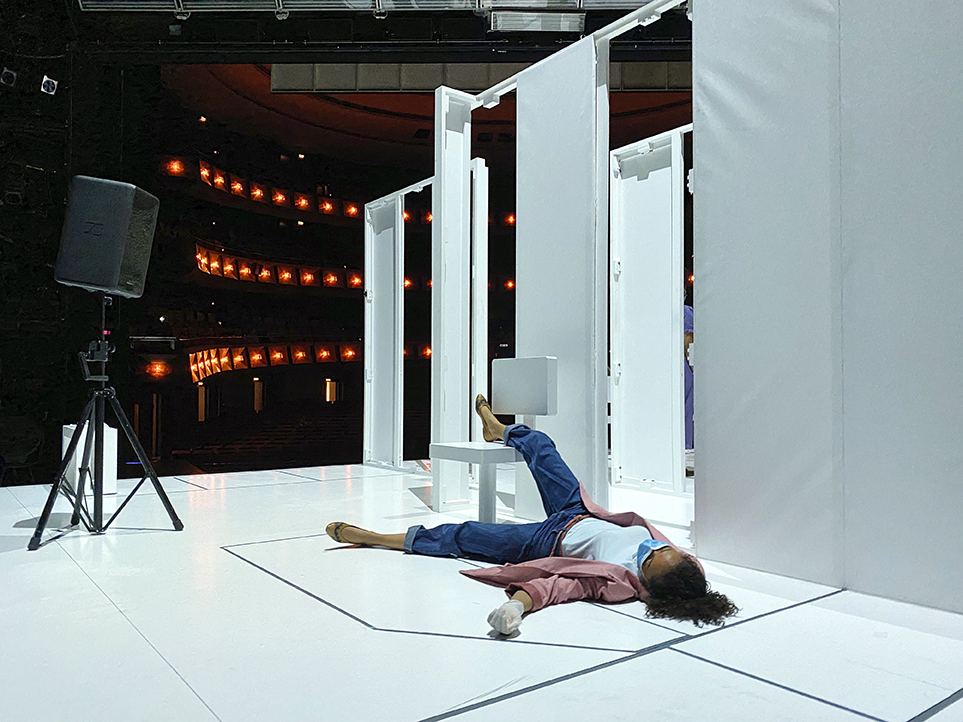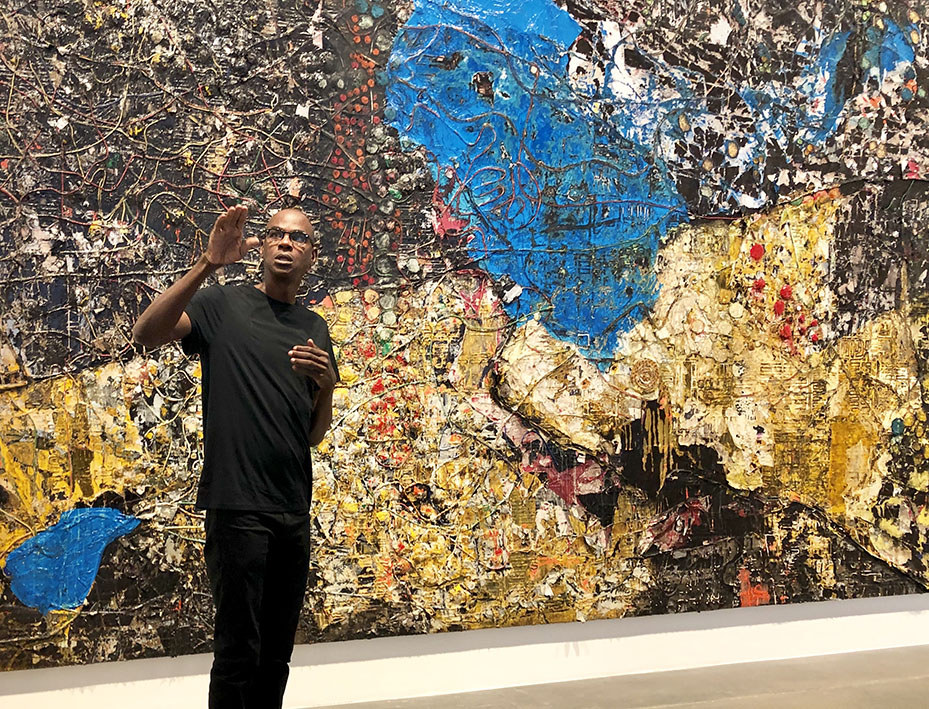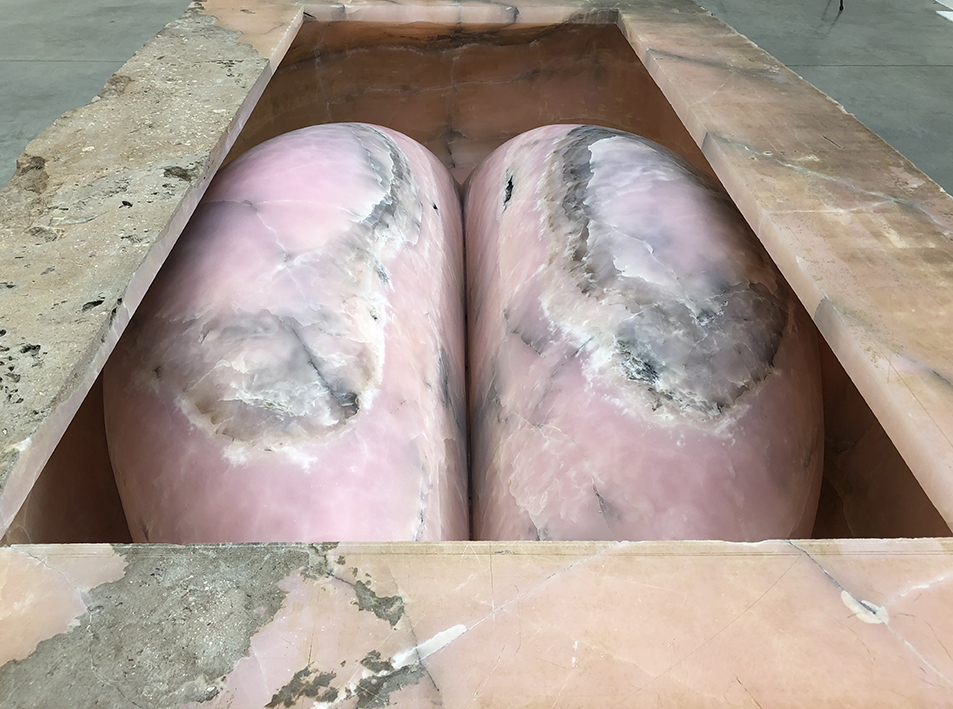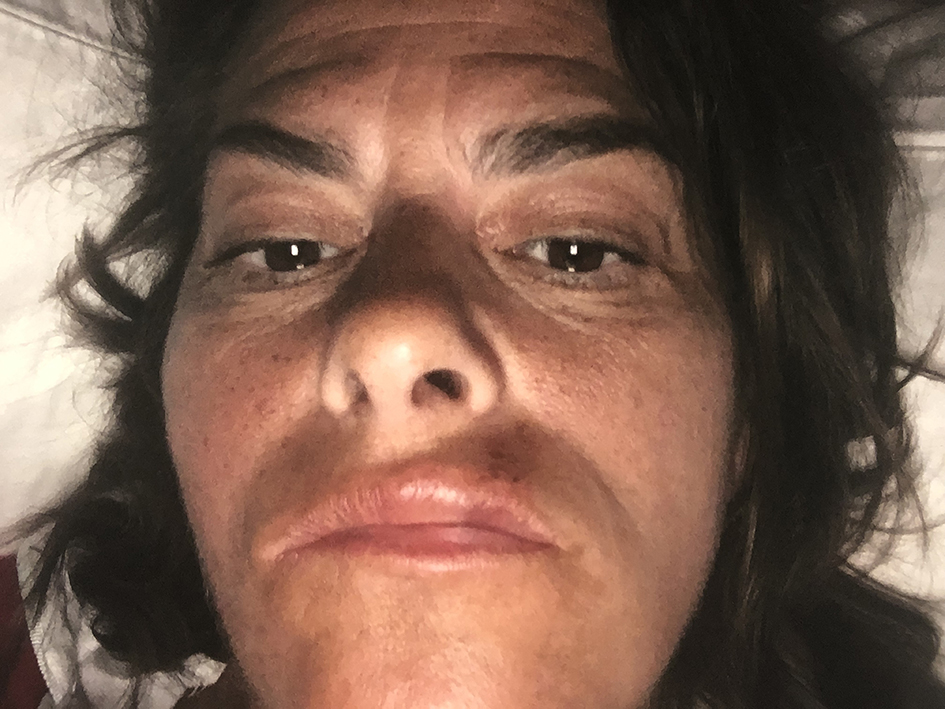 Watching the two ‘making of’ documentaries ‘Lost in La Mancha’ and ‘Hearts of Darkness’, there are some bizarre and spooky similarities in the types of disasters that the directors Terry Gilliam and Francis Ford Coppola faced during the production of their respective films; ‘The Man Who Killed Don Quixote’ and ‘Apocalypse Now’. 200% asked Gilliam if he still has nightmares thinking of the ill-fated production.
Occasionally, in our magazine and on our blog, we have discussed one of the inspirations behind 200%: the gripping documentary ‘Hearts of Darkness’ – the making of ‘Apocalypse Now’. In the documentary we witness the director Francis Ford Coppola facing an accumulation of disasters during the production of the film in the Philippines. At a certain moment Coppola cries out desperately: “My greatest fear is to make a really, shitty, embarrassing, pompous film on an important subject and I’m doing it. I will tell you straight from the most sincere depths of my heart, the film will not be good.” Well, in the end, it was ‘good enough’ to win the Palme d’Or in Cannes and the Golden Globe Award for Best Motion (Drama).
‘Lost in La Mancha’ is another gripping documentary of a disastrous production: ‘The Man Who Killed Don Quixote’, but without a happy ending as the production was derailed. The director of the film, Terry Gilliam, is known for his hugely ambitious films that are breathtaking and fantastical, such as ‘Brazil’, ‘12 Monkeys’ and ‘The Adventures of Baron Munchausen’.
Before starting the Don Quixote project, Gilliam had previously encountered traumatic production difficulties, such as Munchausen – which he was barely able to complete. At the beginning of ‘Lost in La Mancha’, the director comments cheerfully: “If it is easy I don’t do it. It seems that [‘difficulty’] is what ignites my adrenalin, it fires what creativity I have.” It echoes a quote of the Polish artist Wilhelm Sasnal, who is now showing at the Whitechapel Gallery. ‘I find it suspicious when things are too easy. Hardship is part of the work. If there was no hardship, my work would be much weaker”, he told the show’s curator about his paintings ‘Hardship’.
It seems that producing a film of Don Quixote is jinxed as Orson Welles, who also attempted to film Cervantes’s novel, failed to complete the production. Questions come to mind was there an element of naivity in Gilliam’s belief that he could bring the Man from La Mancha to the screen, was the production ill-prepared, or was it merely bad luck that he didn’t succeed?
Setting aside that both Coppola and Gilliam appear bare-chested on the set, there are some bizarre, spooky similarities in the types of disasters that both directors faced during the production of their films, such as ‘air-traffic’ problems, the elements, and the lead actors.
At a critical moment when Coppola was ready to shoot a complicated battle scene involving several military helicopters, which had been made available by President Marcos of the Philippines, the helicopters were deployed to a ‘real’ battlefield to fight the rebels in the south of the country. On Gilliam’s first production day in the Berdanes Reales desert in Spain, it was impossible to record the dialogue between the actors due to the continually penetrating noise of F16s. The location was nearby a NATO aircraft target practice area, but the First Assistant Director had been told that the F16s would only operate for one hour, not throughout the day.
The elements also plagued both productions. Coppola had to face monsoons, destroying most of the sets and a postponement in production. Gilliam’s second production day started with typically glorious Spanish weather with blue skies but, toward the end of day the weather dramatically changed as a bunch of ominous lightning and storms headed towards the set. The ‘heavens’ then opened as hailstorms came down, resulting in floods that turned the set into a mud pool and changed the colours of the landscape, making the footage from the previous day unusable. That was a pity as the filmed material so far, shown in the documentary, looked very promising.
Both directors also had to deal with health problems of their lead character. Martin Sheen had an heart attack and returned to America to recuperate, but he did return to the set a few weeks later to continue shooting. Gilliam cast the 70 year old Jean Rochefort, who was the perfect doppelganger, to play Don Quixote. Unfortunatley the French actor had a herniated disc, which meant he was unable to ride his horse, which was essential to playing the character. Rochefort returned to France for treatment and rest, but he never returned to the set. With no lead actor, the production was cancelled in 2000.
Watching the two ‘making of’ documentaries ‘Lost in La Mancha’ and ‘Hearts of Darkness’, there are some bizarre and spooky similarities in the types of disasters that the directors Terry Gilliam and Francis Ford Coppola faced during the production of their respective films; ‘The Man Who Killed Don Quixote’ and ‘Apocalypse Now’. 200% asked Gilliam if he still has nightmares thinking of the ill-fated production.
Occasionally, in our magazine and on our blog, we have discussed one of the inspirations behind 200%: the gripping documentary ‘Hearts of Darkness’ – the making of ‘Apocalypse Now’. In the documentary we witness the director Francis Ford Coppola facing an accumulation of disasters during the production of the film in the Philippines. At a certain moment Coppola cries out desperately: “My greatest fear is to make a really, shitty, embarrassing, pompous film on an important subject and I’m doing it. I will tell you straight from the most sincere depths of my heart, the film will not be good.” Well, in the end, it was ‘good enough’ to win the Palme d’Or in Cannes and the Golden Globe Award for Best Motion (Drama).
‘Lost in La Mancha’ is another gripping documentary of a disastrous production: ‘The Man Who Killed Don Quixote’, but without a happy ending as the production was derailed. The director of the film, Terry Gilliam, is known for his hugely ambitious films that are breathtaking and fantastical, such as ‘Brazil’, ‘12 Monkeys’ and ‘The Adventures of Baron Munchausen’.
Before starting the Don Quixote project, Gilliam had previously encountered traumatic production difficulties, such as Munchausen – which he was barely able to complete. At the beginning of ‘Lost in La Mancha’, the director comments cheerfully: “If it is easy I don’t do it. It seems that [‘difficulty’] is what ignites my adrenalin, it fires what creativity I have.” It echoes a quote of the Polish artist Wilhelm Sasnal, who is now showing at the Whitechapel Gallery. ‘I find it suspicious when things are too easy. Hardship is part of the work. If there was no hardship, my work would be much weaker”, he told the show’s curator about his paintings ‘Hardship’.
It seems that producing a film of Don Quixote is jinxed as Orson Welles, who also attempted to film Cervantes’s novel, failed to complete the production. Questions come to mind was there an element of naivity in Gilliam’s belief that he could bring the Man from La Mancha to the screen, was the production ill-prepared, or was it merely bad luck that he didn’t succeed?
Setting aside that both Coppola and Gilliam appear bare-chested on the set, there are some bizarre, spooky similarities in the types of disasters that both directors faced during the production of their films, such as ‘air-traffic’ problems, the elements, and the lead actors.
At a critical moment when Coppola was ready to shoot a complicated battle scene involving several military helicopters, which had been made available by President Marcos of the Philippines, the helicopters were deployed to a ‘real’ battlefield to fight the rebels in the south of the country. On Gilliam’s first production day in the Berdanes Reales desert in Spain, it was impossible to record the dialogue between the actors due to the continually penetrating noise of F16s. The location was nearby a NATO aircraft target practice area, but the First Assistant Director had been told that the F16s would only operate for one hour, not throughout the day.
The elements also plagued both productions. Coppola had to face monsoons, destroying most of the sets and a postponement in production. Gilliam’s second production day started with typically glorious Spanish weather with blue skies but, toward the end of day the weather dramatically changed as a bunch of ominous lightning and storms headed towards the set. The ‘heavens’ then opened as hailstorms came down, resulting in floods that turned the set into a mud pool and changed the colours of the landscape, making the footage from the previous day unusable. That was a pity as the filmed material so far, shown in the documentary, looked very promising.
Both directors also had to deal with health problems of their lead character. Martin Sheen had an heart attack and returned to America to recuperate, but he did return to the set a few weeks later to continue shooting. Gilliam cast the 70 year old Jean Rochefort, who was the perfect doppelganger, to play Don Quixote. Unfortunatley the French actor had a herniated disc, which meant he was unable to ride his horse, which was essential to playing the character. Rochefort returned to France for treatment and rest, but he never returned to the set. With no lead actor, the production was cancelled in 2000.
 Eleven years later, it seems as if Don Quixote has been resurrected as Gilliam announced in Cannes that ‘The Man Who Killed Don Quixote’ is “coming together”, with Robert Duval replacing Rochefort and Ewan McGregor to be part of the production.
At the London Film Festival Awards 200% bumped into, the always cheery, Gilliam and discussed with him if he still feels the pain of the ill-fated production and whether he ever re-watched ‘Lost in La Mancha’.
200%: Do you still have nightmares thinking of the production of ‘The Man Who Killed Don Quixote’?
Terry Gilliam: I think I’ve gotten over the intensity of that moment. The reason I still want to make it and have not given up on Don Quixote is because it is a good story, it is a good script, something I want to tell that I think I can tell differently, maybe better than other people. The problem with Don Quixote is that he obsesses you and you become like him. In the intervening years, I’ve been doing other films, but I just would like to be able to say before I die “I did it!” It might be a crap film, but at least it is out of me, it’s all gone. I’ve cleansed myself of Don Quixote. [laughs]
200%: Do you still feel the pain of the production?
TG: It’s a long time ago, I don’t remember the pain. That’s whyI’m glad the documentary was made, because it reminds me how awful it was. [laughs] I’m very good at blocking out pain, my system does that with bad things, I can suppress it. I don’t think I’m in denial I just think what is the point of going on about it? So they [painful memories] get pushed away. That’s why I was happy that the guys who were filming the documentary kept continuing to shoot when everything was collapsing. They initially said “we’re going home” and I told them to keep shooting. Perhaps it’s me being a bit selfish wanting a diary of what happened and when my memory is completely gone I can watch it to remind myself of the pain.
200%: Have you ever watched ‘Lost in La Mancha’?
TG: No, I haven’t. I know it’s there, so I can watch it when I choose.
200%: Would that be when the new film has been completed?
TG: That will be the time to do it. But until we start shooting I’m not going to actually look at that. [laughs]
Written by Thierry Somers (11/2011)
Eleven years later, it seems as if Don Quixote has been resurrected as Gilliam announced in Cannes that ‘The Man Who Killed Don Quixote’ is “coming together”, with Robert Duval replacing Rochefort and Ewan McGregor to be part of the production.
At the London Film Festival Awards 200% bumped into, the always cheery, Gilliam and discussed with him if he still feels the pain of the ill-fated production and whether he ever re-watched ‘Lost in La Mancha’.
200%: Do you still have nightmares thinking of the production of ‘The Man Who Killed Don Quixote’?
Terry Gilliam: I think I’ve gotten over the intensity of that moment. The reason I still want to make it and have not given up on Don Quixote is because it is a good story, it is a good script, something I want to tell that I think I can tell differently, maybe better than other people. The problem with Don Quixote is that he obsesses you and you become like him. In the intervening years, I’ve been doing other films, but I just would like to be able to say before I die “I did it!” It might be a crap film, but at least it is out of me, it’s all gone. I’ve cleansed myself of Don Quixote. [laughs]
200%: Do you still feel the pain of the production?
TG: It’s a long time ago, I don’t remember the pain. That’s whyI’m glad the documentary was made, because it reminds me how awful it was. [laughs] I’m very good at blocking out pain, my system does that with bad things, I can suppress it. I don’t think I’m in denial I just think what is the point of going on about it? So they [painful memories] get pushed away. That’s why I was happy that the guys who were filming the documentary kept continuing to shoot when everything was collapsing. They initially said “we’re going home” and I told them to keep shooting. Perhaps it’s me being a bit selfish wanting a diary of what happened and when my memory is completely gone I can watch it to remind myself of the pain.
200%: Have you ever watched ‘Lost in La Mancha’?
TG: No, I haven’t. I know it’s there, so I can watch it when I choose.
200%: Would that be when the new film has been completed?
TG: That will be the time to do it. But until we start shooting I’m not going to actually look at that. [laughs]
Written by Thierry Somers (11/2011)


